How To Use Claude 3 Prompt Engineering [2024]
How To Use Claude 3 Prompt Engineering 2024.In the rapidly evolving world of artificial intelligence, one name stands out as a beacon of advanced language modeling and intelligent interaction: Claude 3. As the latest iteration in Anthropic’s line of AI assistants, Claude 3 represents a quantum leap in terms of understanding, reasoning, and communication abilities. But to truly harness its power, you need to master the art of prompt engineering. This comprehensive guide will walk you through everything you need to know about crafting effective prompts for Claude 3, ensuring you get the most out of this cutting-edge AI technology.
Understanding Claude 3: The Next Generation of AI
Before we dive into prompt engineering techniques, it’s crucial to understand what makes Claude 3 unique. Building upon its predecessors, Claude 3 is designed to be more intuitive, contextually aware, and capable of handling complex, multi-step tasks. Its advanced language model has been trained on an even broader range of data, allowing it to understand and generate human-like text across various domains.
Key features of Claude 3 include:
- Enhanced contextual understanding
- Improved logical reasoning capabilities
- Better handling of ambiguity and nuance
- Advanced task planning and execution
- More natural, conversational interactions
These advancements mean that Claude 3 can better interpret your intentions, even when your prompts are not perfectly structured. However, mastering prompt engineering will take your interactions to another level, unlocking the full potential of this AI powerhouse.
The Basics of Prompt Engineering
Prompt engineering is the practice of crafting input messages (prompts) that effectively communicate your intent to an AI system. It’s an art that combines clear language, strategic structure, and an understanding of how AI models interpret text. With Claude 3’s enhanced capabilities, good prompt engineering can lead to astonishingly accurate, relevant, and helpful responses.
Be Clear and Specific
The golden rule of prompt engineering is clarity. Even though Claude 3 is better at inferring intent, being clear and specific in your prompts will always yield better results.
❌ Bad: “Tell me about technology.”
✅ Good: “Provide a 500-word summary of how artificial intelligence has evolved from rule-based systems to modern deep learning models, focusing on key milestones between 1980 and 2023.”
The bad prompt is vague, potentially leading to a generic response. The good prompt clearly defines the topic, length, time frame, and key focus areas.
Structure Your Prompts
Claude 3 excels at understanding structured information. Use bullet points, numbered lists, or clear sections to organize your thoughts.
Example:
“I’m writing a blog post about sustainable fashion. Please help me outline the article with:
- Introduction (100 words): Define sustainable fashion and its importance.
- Environmental Impact (200 words): Discuss water usage, chemical pollution, and carbon footprint.
- Social Issues (200 words): Cover worker exploitation and unsafe conditions.
- Sustainable Practices (300 words): Explain organic materials, fair trade, and circular fashion.
- Consumer Action (200 words): Suggest ways readers can support sustainable fashion.”
This structured prompt helps Claude 3 understand the desired organization and approximate length for each section.
Use Examples and Templates
When you want a specific format or style, provide examples or templates in your prompt.
“I want to create product descriptions for my artisanal cheese shop. Here’s an example:
‘Moonlit Blue: A celestial dance of flavors, our Moonlit Blue is a stellar soft cheese. Crafted under the glow of a full moon in the French Alps, it offers a creamy texture with gentle blue veining. Notes of sweet cream and a peppery finish make it perfect for a midnight snack or as the star of your cheeseboard.’
Using this style and structure, create descriptions for ‘Sunburst Cheddar’ (sharp, aged 3 years) and ‘Mountain Herb Gouda’ (infused with alpine herbs).”
By providing a template, you guide Claude 3 in replicating the desired tone, length, and information structure.
Leverage Claude 3’s Context Understanding
One of Claude 3’s strengths is its ability to maintain context over longer conversations. Use this to build upon previous responses or to refine your requests.
“I asked you to write product descriptions for my artisanal cheese shop earlier. For ‘Sunburst Cheddar’, can you expand the description to highlight its pairing with robust red wines and notes of caramelized fruit?”
Claude 3 can refer back to the previous prompt and example, understanding the context and style you’ve established. This allows for more natural back-and-forth exchanges.
Provide Feedback and Iterative Refinement
Like any powerful tool, Claude 3’s performance improves with practice and feedback. If a response isn’t quite what you wanted, provide clear feedback so Claude 3 can learn and adapt.
The description for ‘Mountain Herb Gouda’ is good, but I’d like you to focus more on the unique flavor profile of the alpine herbs used, rather than the texture.
Claude 3 can then use this feedback to refine its response, improving its understanding of your preferences.
Advanced Prompt Engineering Techniques
As you become more comfortable with prompt engineering basics, you can explore advanced techniques to push Claude 3’s capabilities even further.
Chained Prompts and Multi-Step Tasks
Claude 3 excels at breaking down complex tasks into smaller steps. Leverage this by providing a series of prompts, each building upon the previous response.
“First, brainstorm 10 unique ice cream flavor ideas inspired by different world cuisines. Then, for the top 3 most interesting flavors, develop a detailed product description highlighting the key ingredients and flavor notes.”
This chained prompt allows Claude 3 to tackle the task systematically, first generating the flavor ideas, then crafting descriptions based on your selection of the top 3.
Inject Creativity and Imagination
While Claude 3 is highly capable at analytical tasks, it can also flex its creative muscles when prompted correctly.
“I want you to imagine a world where animals could speak and had their own societies, similar to humans. Describe what a typical day might look like for a squirrel living in this world, including details about their job, home life, social interactions, and any challenges they might face.”
By setting the imaginative parameters, you open the door for Claude 3 to showcase its ability to think outside the box and generate unique, creative content.
Explore Conditional Scenarios
Claude 3’s logical reasoning skills make it adept at exploring hypothetical scenarios and conditional situations.
“Let’s imagine a world where humans have developed a way to travel through time. However, there are strict rules:
- You can only travel to the past, not the future.
- You cannot interact with or change anything from the past; you’re an observer only.
- Each trip is limited to 24 hours before you’re automatically returned to the present.
Given these rules, describe three different time periods you would want to visit and why. For each, outline what you would hope to experience or observe during your 24-hour stay.”
By setting up clear conditions and constraints, you challenge Claude 3 to think through logical implications and craft responses that adhere to the specified parameters.
Conclusion: Unleashing Claude 3’s Potential
Prompt engineering is the key that unlocks the vast potential of Claude 3. By mastering the art of crafting clear, structured, and contextual prompts, you can engage in rich, intelligent interactions that push the boundaries of what an AI assistant can achieve.
Remember, prompt engineering is an iterative process. Don’t be afraid to experiment, provide feedback, and continually refine your prompts. The more you practice, the better you’ll become at communicating your intentions to Claude 3, leading to more accurate, insightful, and valuable responses.
Embrace the power of Claude 3’s advanced language model, and let your imagination run wild. With the right prompts, you can tackle complex analytical tasks, explore creative endeavors, and engage in thought-provoking hypothetical scenarios – all while benefiting from the cutting-edge capabilities of this remarkable AI technology.
So, what are you waiting for? Start crafting your prompts today and unlock a world of possibilities with Claude 3!
FAQs
What is prompt engineering?
Prompt engineering refers to the practice of carefully crafting the input prompts or instructions given to Claude 3 (an advanced AI language model) to achieve desired outputs or behaviors.
Why is prompt engineering important for Claude 3?
Well-designed prompts allow users to unlock Claude 3’s full potential, eliciting more relevant, coherent, and high-quality responses tailored to specific use cases.
What are some key principles of effective Claude 3 prompting?
Important principles include clarity, specificity, providing sufficient context, avoiding ambiguity or contradictions, and framing prompts constructively.
How can I improve my Claude 3 prompting skills?
Study prompt engineering guides, analyze successful prompt examples, practice systematically iterating and refining prompts, and leverage techniques like chain-of-thought prompting.
Are there tools to assist with Claude 3 prompt engineering?
While no dedicated prompt engineering tools currently exist, practices like maintaining prompt libraries, using prompting templates, and integrating prompts with coding interfaces could be beneficial.
What are some common prompt engineering pitfalls with Claude 3?
Potential pitfalls include prompts that lack focus, contain contradictory instructions, promote unethical outputs, or expose the model to sources it cannot directly access.
How does prompt engineering differ for different Claude 3 use cases?
Prompting techniques may vary based on whether Claude 3 is used for open-ended tasks like writing or closed-ended tasks like question answering or code generation.


